As The City Resumes Land Use Review, Gowanus Rezoning Is Next
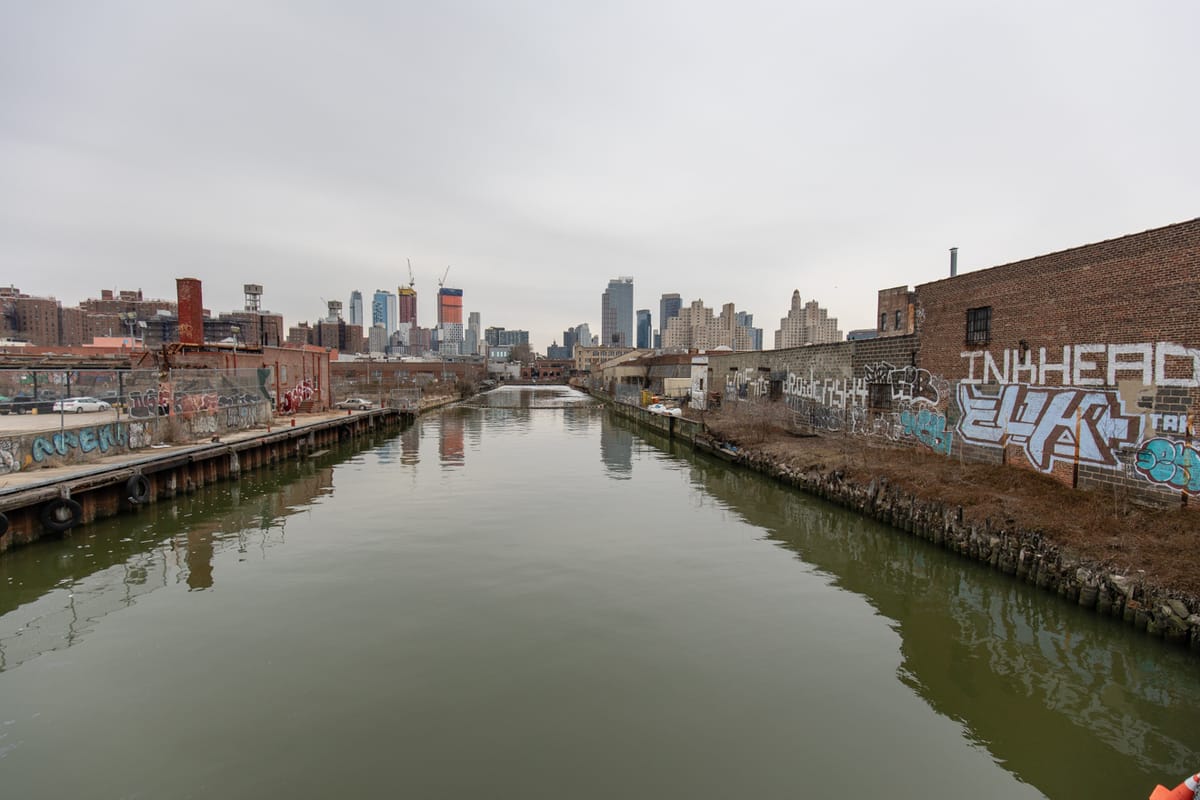

When New York City resumes its land use review process in mid-September, there will be two major rezonings on the docket: Industry City, which was recently given the green light by the Department of City Planning, and Gowanus, the fate of which is still up in the air.
The latter has been in the works for what seems like forever, but has, in actuality, been about four years. The current draft scope of work calls for a number of large-scale changes to a mostly low-rise, 80-block area that’s predominantly home to warehouses and industrial buildings. The area that could be rezoned encompasses not just Gowanus proper, but a number of streets on the border of Park Slope, Cobble Hill, and Carroll Gardens.
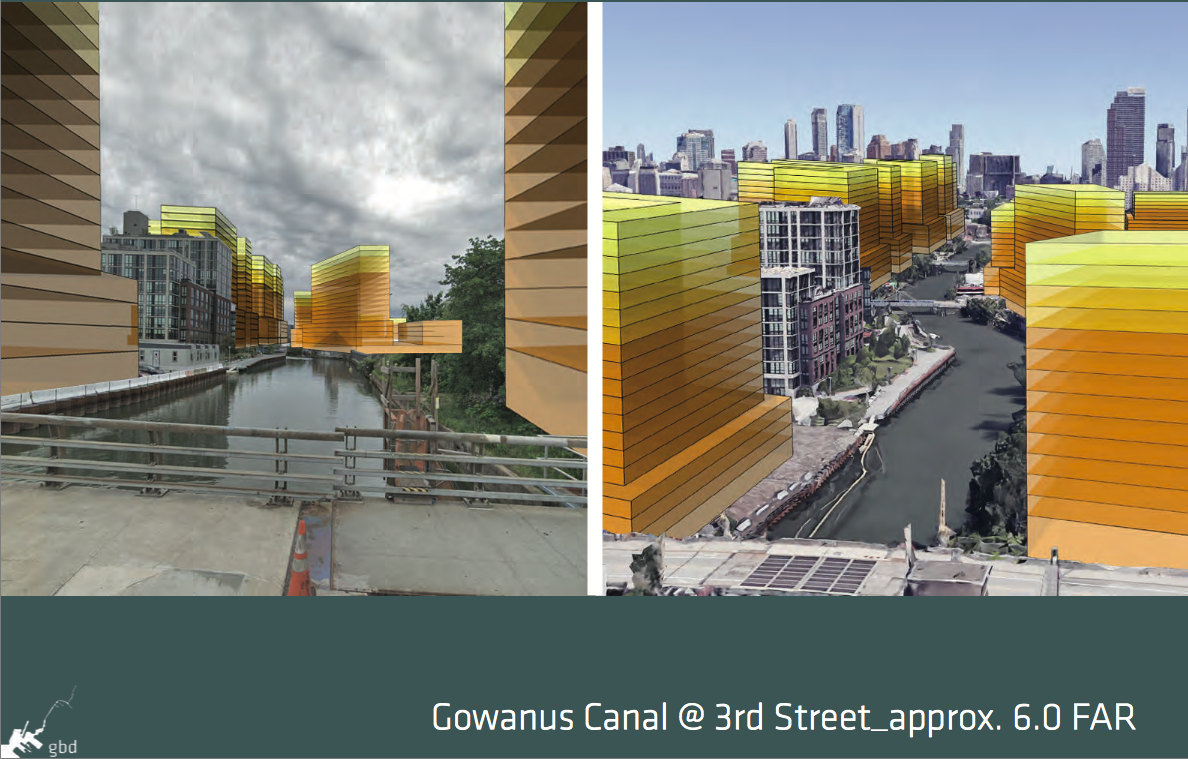
As with many other city-led rezonings, one of the primary goals in Gowanus is to add housing, and lots of it. The proposal calls for building thousands of apartments — more than 8,000 in total, with approximately 3,000 earmarked as affordable. Many of those units would be clustered in tall buildings along the Gowanus Canal, which is a federally-designated Superfund site. A good chunk of that housing would be built by private developers, who in recent years have snapped up land throughout the neighborhood in anticipation of the rezoning. (Some of the major property owners include Avery Hall Investments and Two Trees Management.)
Other proposed changes include the creation of nearly 700,000 square feet of commercial space, as well as new schools and parkland, both of which are sorely missing from the neighborhood (check out our previous reporting here).
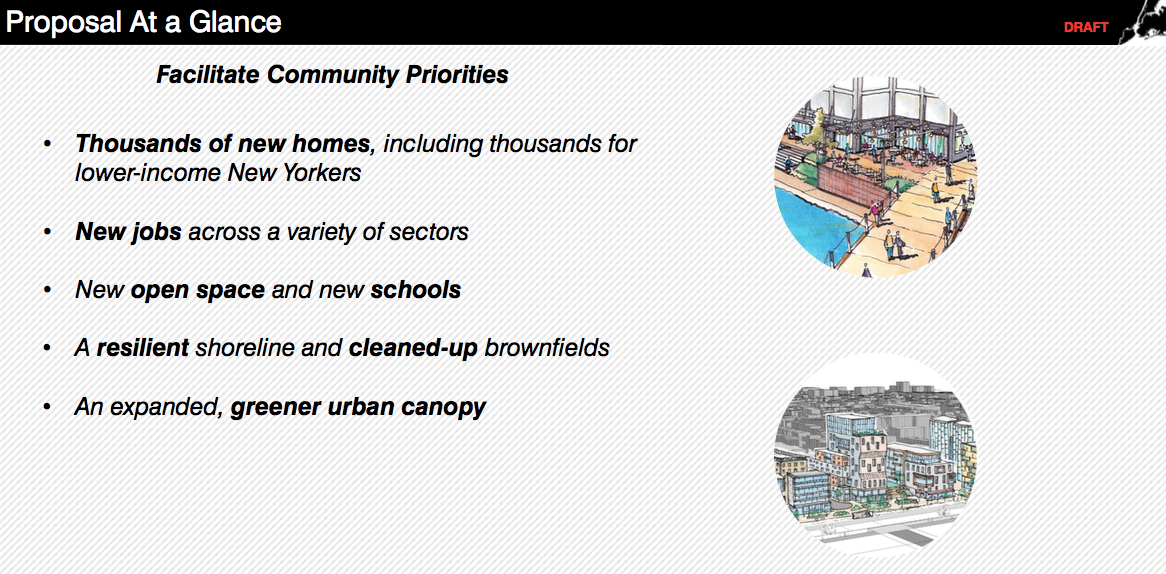
Rezonings Post-Pandemic
But some community members, including elected officials who represent Gowanus and its neighboring districts, as well as longtime neighborhood advocates, believe that the pandemic has changed how the city should approach the rezoning — although there are vast differences in what stakeholders believe those changes should look like.
“There have been a lot of conversations, but I wouldn’t say yet anything has changed in a concrete way,” says City Councilmember Brad Lander, whose district encompasses part of the area that would be affected by the rezoning. “There will need to be some meaningful public engagement with the community in a range of different ways, precertification, about what would need to be tweaked, and about what feels even more urgent.”
Lander says his chief concern with the draft scope before the pandemic was the fact that it excludes the neighborhood’s NYCHA complexes — the Gowanus, Wyckoff Gardens, and Warren Street developments — from any sort of investment from the rezoning. “That had been the community’s number one issue and my number one issue in this rezoning for a long time,” he says.
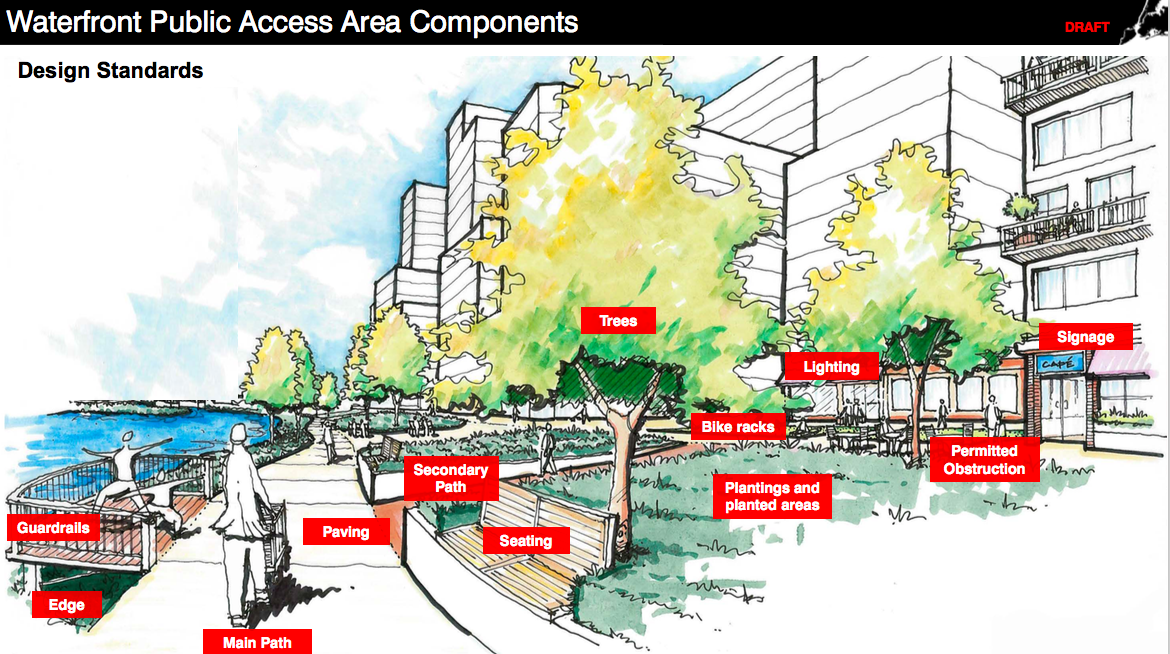
But Lander also believes that the Gowanus rezoning has the potential to provide a framework for how rezonings can address issues that the Covid-19 crisis has brought to the forefront.
“For starters, it has the potential to be really, the city’s first fair housing rezoning,” he says, citing the fact that it will create thousands of affordable apartments while also bringing market-rate housing to a neighborhood that is wealthier, and whiter, than other areas rezoned by the de Blasio administration.
Opponents to the rezoning don’t see it that way, though. In recent months, the opposition to the rezoning has coalesced around several key issues, including the number of market-rate apartments that will be created, and the lack of a racial impact study for the area.
Racialized Displacement
Opponents believe that before the ULURP process gets underway, the city should conduct a racial impact study to determine if the rezoning will have an outsize impact on the demographics of Gowanus. Studies have shown that other city-led rezonings have led to “racialized displacement” in neighborhoods like Williamsburg and Park Slope, both of which were undertaken by former mayor Michael Bloomberg’s administration. In the case of Park Slope’s Fourth Avenue, a 2019 study by Churches United for Fair Housing found that while the overall population of the area grew by about 6,000 people, the neighborhood lost some 5,000 Black and Latino residents. Advocates believe that impact studies could lessen those effects in future city-led efforts.
In 2019, Public Advocate Jumaane Williams introduced a bill in the City Council calling for such an analysis to be included in any city land use change that also involves an environmental impact study; so far, though, it hasn’t made it beyond being introduced in the council. In the meantime, a coalition of neighborhood groups and housing activists (including Churches United for Fair Housing, Friends and Residents of Greater Gowanus, and Justice for All Coalition) is circulating a petition calling for a racial impact study.
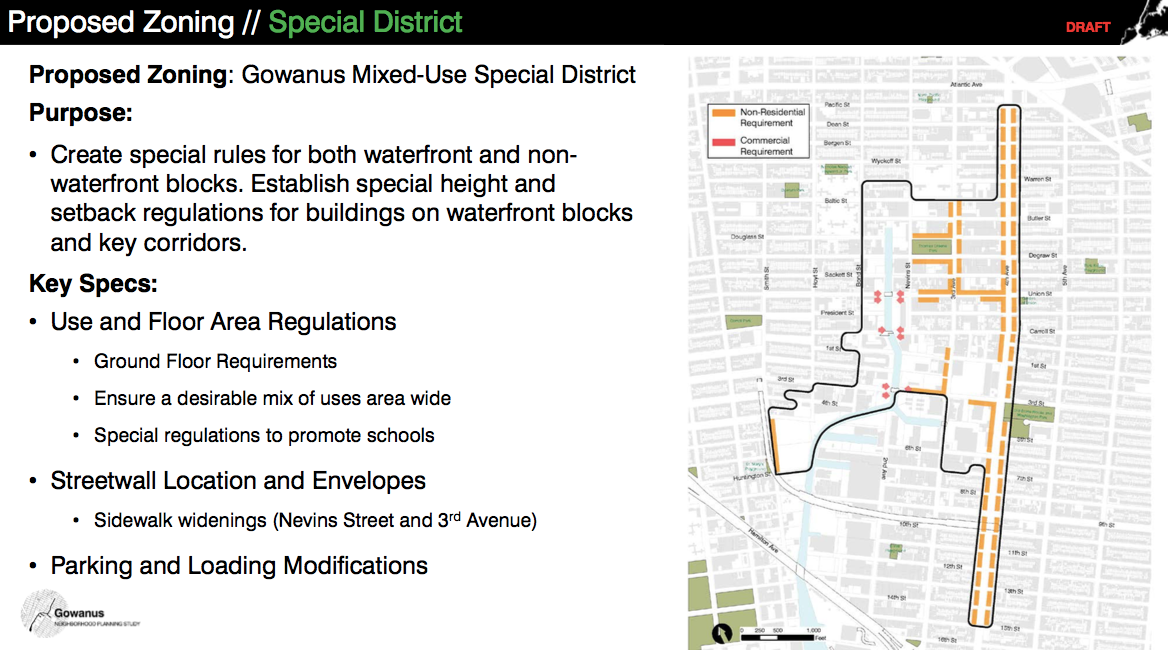
The Gowanus rezoning, which will be the largest rezoning undertaken under the de Blasio administration, is the perfect opportunity to show the value and importance of such a study to ensure that social justice—racial, environmental, and economic—is at the center of NYC’s development.”
But Lander argues that the “racialized displacement” experienced in other neighborhoods is unlikely to happen in Gowanus. “There is something disingenuous about using a racial equity argument to ask to wait on the first MIH rezoning to be applied in a whiter, wealthier neighborhood with strong racial equity and fair housing potential,” he says.
“I’ve never seen a rezoning where people aren’t displaced,” counters New York state assemblymember Jo Ann Simon, who also represents the district. “[Rezonings are] all inherently speculative, just like every business plan is inherently speculative. You make projections. [And] you can’t blame people that something didn’t happen the way they expected it to happen, because there’s just an inability of human beings to project as far out as you need to do that. The way to address those issues is to get more information and more nuanced information.”
Virtual Community Engagement
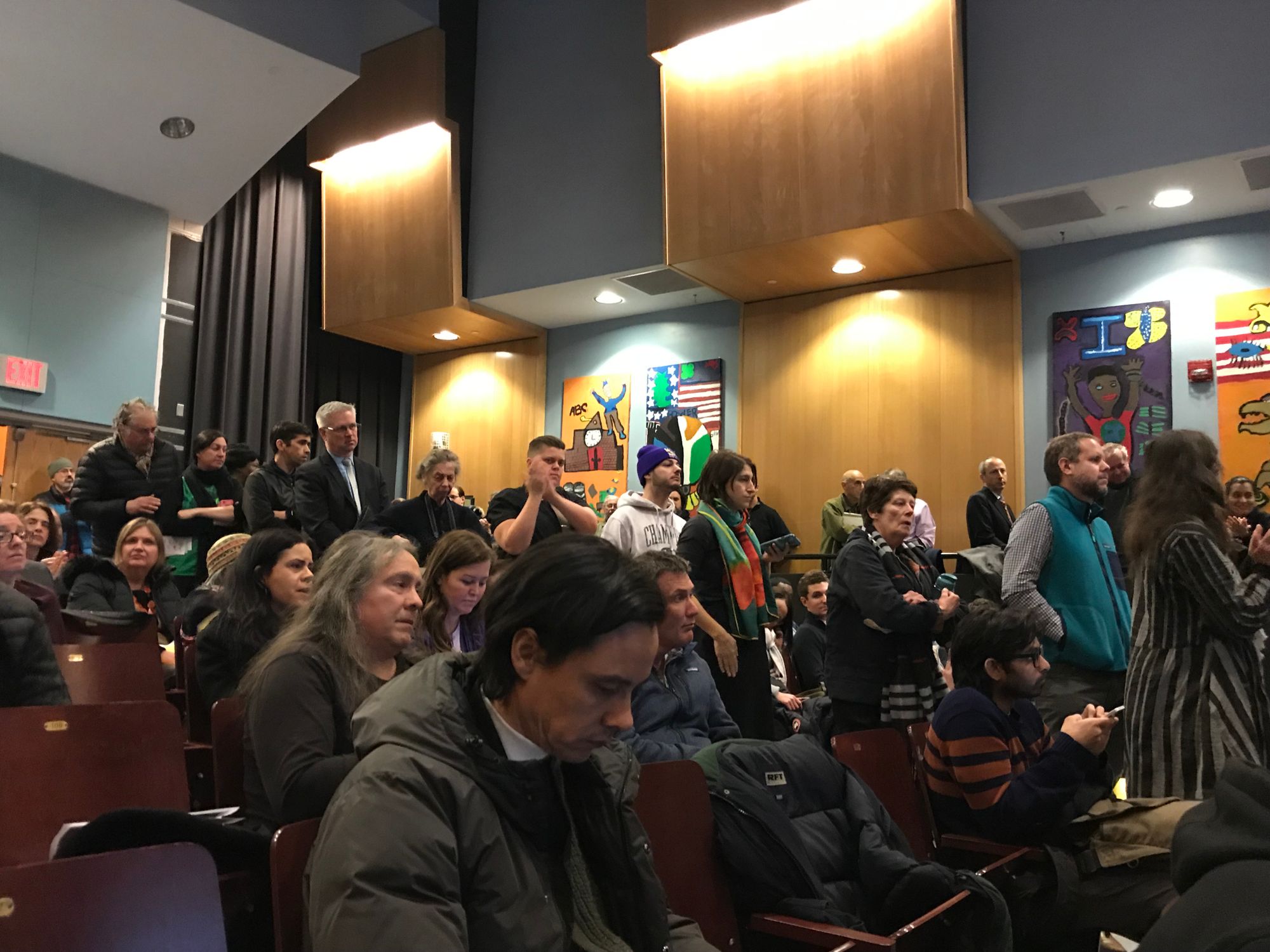
Another point of contention for many stakeholders, including Simon, is coronavirus-mandated changes to the public review process; by necessity, the rounds of in-person hearings that usually accompany ULURP — at community boards, the City Planning Commission, and the City Council — will have to be held remotely. In a recent op-ed for City Limits, Simon and Gowanus resident Brad Vogel argued that ULURP via Zoom is “neither fair nor legally sufficient,” and called on the city to halt the process until the process can be conducted in-person.
“It’s pretty clear that a physical, in-person public hearing needs to take place, at least at the first couple of levels in the process,” Vogel says. “To me, it’s really disconcerting that the city is trying to push forward with what seems like an all-virtual iteration of those public hearings for ULURP because to me, virtual ULURP is legally insufficient ULURP.”
In response, the Department of City Planning emphasized that New Yorkers can participate in the ULURP process via its new NYC Engage portal. “Like many government bodies that have moved to remote meetings, the New York State legislature and U.S. Supreme Court among them, we will continue to work together to make this a fairer and more equitable society,” Joseph Marvilli, a spokesperson for the Department of City Planning, said in a statement.
Gowanus Canal Superfund Site Cleanup
Given that a chunk of the proposed new development would surround the Gowanus Canal, there are also environmental concerns to consider. The canal, which is a federal Superfund site, isn’t expected to be fully clean for at least another three years (if not longer), and there are concerns that new buildings could reverse the efforts to dredge the waterway.
“We cannot undo, in any respect, the effects of the cleanup,” Simon says. “That is still a big open question, and I think will continue to be a big open question, and certainly a question in a lot of people’s minds going forward.”
The draft scope of work currently calls for adding six acres of open space to the neighborhood, some of which would take the form of publicly accessible esplanades and other green space along the canal and throughout the rezones area. The goal is not only to add parkland, which is in short supply in Gowanus, but to also increase the resiliency of the area surrounding the canal, in anticipation of climate change-driven issues that will likely arise in the future.
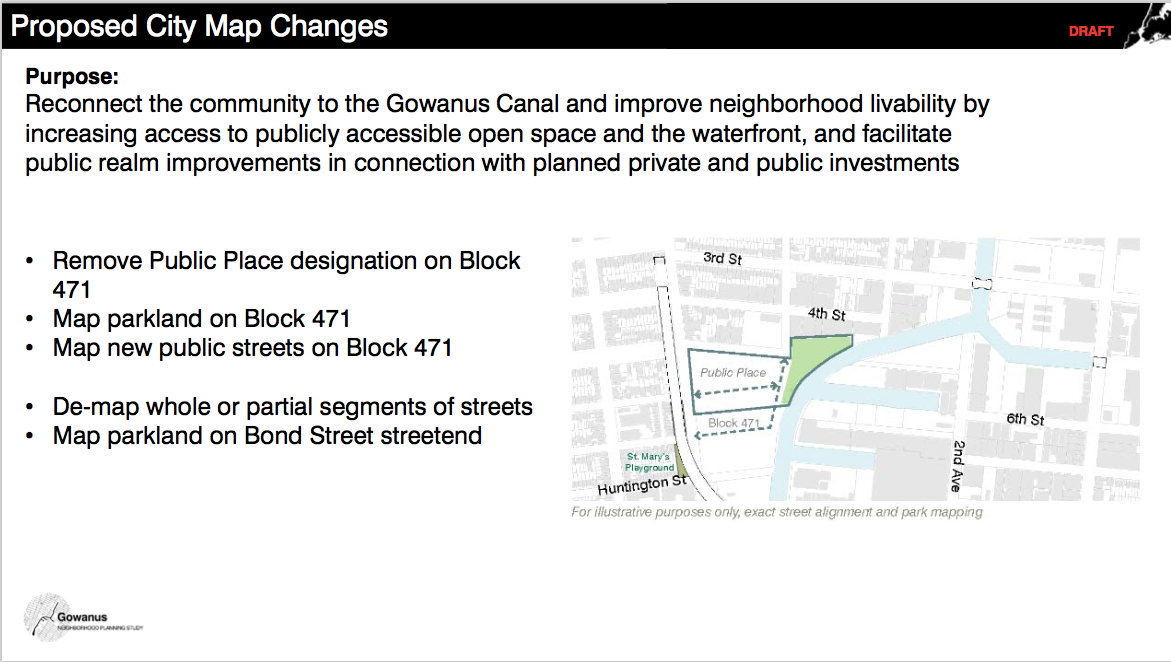
Locals have proposed alternative solutions that they say would be a better use of the polluted land near the canal. One such proposal is Gowanus Lands, an idea for a public park on a city-owned brownfield near Smith and Fifth Streets that’s currently known as Public Place. The land is currently earmarked for a mixed-use development known as Gowanus Green, which would have more than 900 apartments and a new school. The creators of Gowanus Lands, in an interview with the Brooklyn Paper, said that elected officials should rethink the “big push to densify” in the wake of the Covid-19 crisis and consider more open space in the neighborhood instead. (However, it’s worth noting that studies have not found a link< between density and the spread of the coronavirus.)
What’s Next?
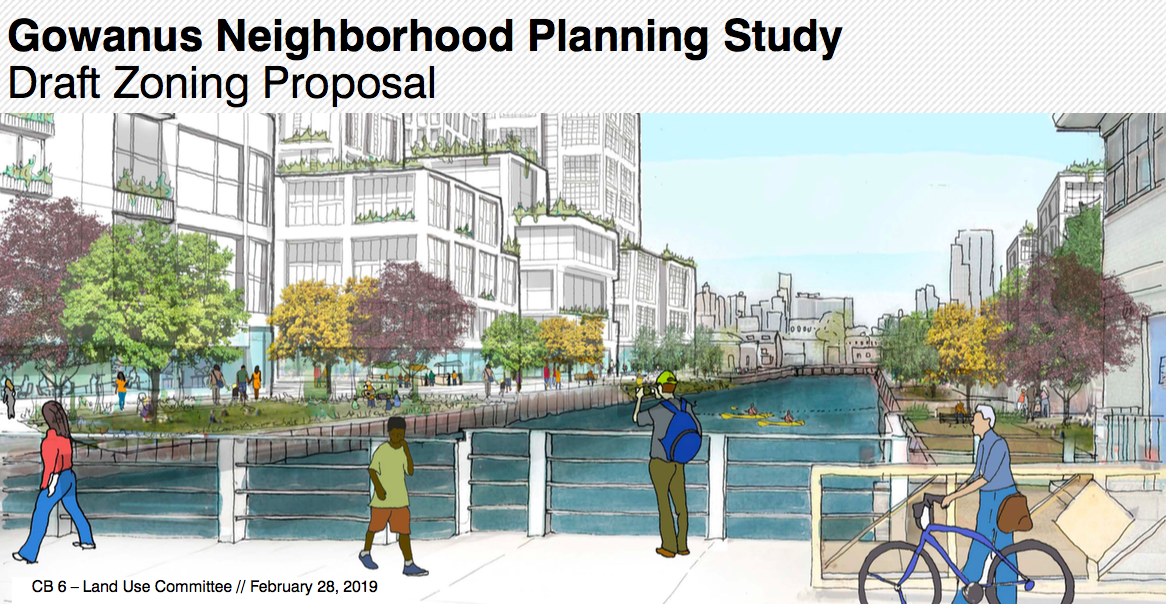
For now, all of this is up in the air; the Department of City Planning has not yet confirmed a date for when the Gowanus rezoning process may begin, and even if it gets underway before the end of the year, there will be many hurdles before it can become a reality.
“We will either move forward in the next few months with [as good of] good engagement as one can do during COVID, or the city is not going to move forward with the Gowanus rezoning and it will be consigned to the dustbin, and maybe in a decade, someone will work on it again,” Lander says.
One big open question is how the project economic fallout from the Covid-19 crisis will affect the rezoning; the city is expecting a loss of $9 billion in tax revenue as a result of the crisis, and it’s unclear at this point how that may affect land use changes or development efforts throughout the city.
“A big rezoning like this is a very different thing than rezoning a particular street corner or small area that takes in a couple of buildings,” Simon says. “I don’t see how we are not affected by the economy, the changes to the economy, but I don’t think anybody really knows what those are at this juncture.”
But Lander believes the Gowanus rezoning could be a crucial element of the city’s eventual recovery from the pandemic and its economic fallout. “If we’re going to do it, it’s going to be because we invest in more equal and integrated places because we invest in more sustainable neighborhoods and do it in a way that creates jobs and promotes economic activity over the next couple of years with a long-term investment approach, and here’s a pretty good opportunity to do that,” he said.




